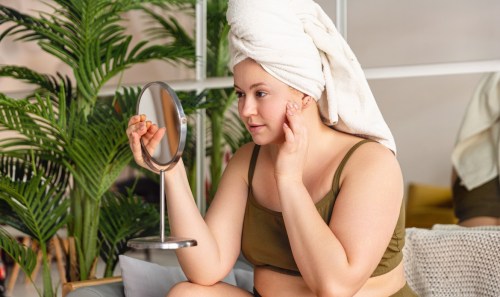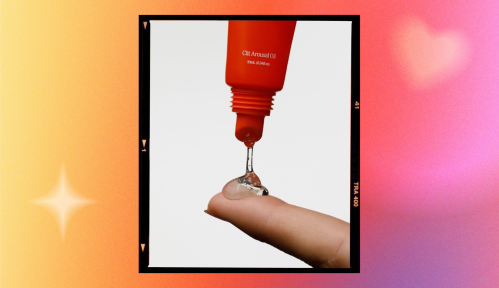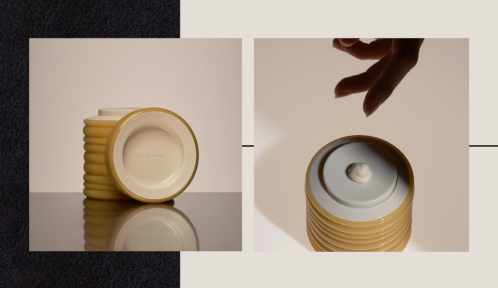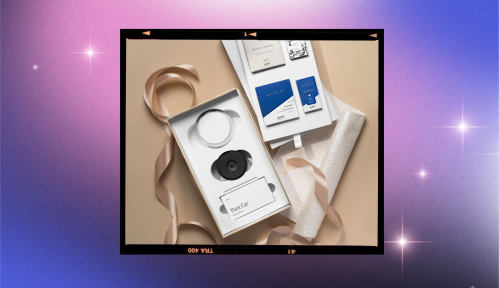Our editors independently select these products. Making a purchase through our links may earn Well+Good a commission
Exfoliation is an integral part of any skin-care routine, as it lifts dead skin cells, clears gunk from your pores, and can help the rest of your products soak into your skin more effectively. Back in the early aughts, many of us swore by intense scrubs to get the job done (… remember the apricot-scented stuff?!). Now, though, gentler chemical exfoliants have taken center stage, and our old favorite physical formulas have become one of the most polarizing product categories in skin care. A quick scroll through social media reveals hundreds of videos vilifying these skin-sloughing scrubs, but according to pros, all this hate may be misplaced.
Experts in This Article
board-certified dermatologist at Skin Wellness in Birmingham, Alabama
Heather Hickman is Dermalogica’s Senior Director of Education
Julie Sati is Licensed Medical Esthetician.
Roberta Moradfar is a Board-Certified Advanced Aesthetics Nurse Practitioner and Founder of EFFACÈ Aesthetics.
While it’s probably not a good idea to aggressively slough off your skin with walnut particles twice a day, it doesn’t necessarily mean that all physical exfoliants are bad. In fact, not only are these formulas wrongly demonized, but there may actually be some benefit to using them every day. Keep reading for what you need to know before you toss that face scrub in the trash.
How physical exfoliants got a bad rap
“Daily exfoliation is a controversial skin topic because there’s the question of whether the exfoliator is too abrasive, causing it to strip natural oils of the skin, which could subsequently cause dryness of the skin and damage to the skin’s barrier,” explains Roberta Moradfar, board-certified advanced aesthetics nurse practitioner and founder of EFFACÈ Aesthetics.
While it’s possible to go too hard with any type of exfoliant, physical formulas tend to be the most common culprits behind overexfoliation because of how they work to slough off skin. “Physical exfoliators that use rough or larger particles to exfoliate are too harsh for the skin and can actually cause micro-tears at the skin’s surface,” says Corey L. Hartman, MD, FAAD, board-certified dermatologist and Founder of Skin Wellness Dermatology in Birmingham, AL. Although these tears are so tiny that you might not see or even feel them, they create space for bacteria to creep into the skin, which can lead to a disrupted skin barrier and acne or irritation in sensitive complexions—hence the rampant social media rumors that physical exfoliants are terrible for your skin.
However, while this pertains to some scrubs made with harsh ingredients, it doesn’t mean that all physically exfoliating formulas are problematic. According to Dermalogica’s Senior Director of Education, Heather Hickman using a physical exfoliator daily can be advantageous if you use physical ingredients that won’t wreak havoc on the skin, use proper exfoliation techniques, and use a barrier-building skin-care routine after exfoliation.
How to safely use physical exfoliants
1. Look for “soft” ingredients
There are a number of different types of physically exfoliating particles, and some are far more aggressive than others. Hickman notes that you should avoid anything with “nut shells such as walnut or apricot kernels,” as they have jagged edges that can lead to damage and irritation. Instead, look for ingredients that soften when they come into contact with water, like rice, oats, or jojoba esters, which will gently polish the skin instead of scrubbing or tearing it. Finally, look for formulas with hydrating and calming ingredients that will soothe the skin as you whisk away dead skin cells.
2. Use gentle motions
It may seem counterintuitive, but right way to use a scrub involves very little actual scrubbing. Forcefully sloughing product onto your skin wreaks havoc on your skin barrier, which can lead to the dry, flaky feeling that we tend to associate with overexfoliation (the same goes for applying one of these formulas onto dry skin).
Instead, think of your complexion as a delicate surface that craves gentle motion and lots of water. “The best way to use a physical exfoliant is in the shower so you can incorporate plenty of water and use gentle upwards movements,” says Hickman. Dr. Hartman recommends using a dime-size amount of product for the face and using the smallest amount of pressure. To ensure you’re not rubbing too hard, only use the flat side of your fingers (never your palms!) and employ the same amount of pressure you would use to rub facial oil onto your skin.
3. Remember: one and done
Sure, it can be tempting to layer on an additional chemical exfoliant post-scrub to ensure you’ve really gotten rid of all the dirt and grime from your skin, but that’s decidedly a bad idea. “We’re hearing a lot about people wanting to do double exfoliation at home, which usually entails the use of a manual exfoliator along with a chemical exfoliator such as a fruit acid peel,” says Moradfar. She and Dr. Hartman both note that there should only be one exfoliant in your routine each day, otherwise you risk overdoing it and screwing with your skin barrier.
4. Barrier aftercare is crucial
Overexfoliation can dry out your complexion, which is why it’s critical to follow up your scrubbing routine with hydrating ingredients that will help keep your skin barrier strong. Hickman loves using a hyaluronic acid serum after exfoliation to ensure that the skin has enough water content. After that, you should use a moisturizer that contains ceramides or omega fatty acids to replenish your lipid barrier and lock hydration into the skin.
5. Take it slow
Finally (and most importantly!) make sure to listen to your skin. Dr. Hartman notes that it’s perfectly fine to exfoliate if you have sensitive skin, so long as you are using products that are right for you and are sticking to a hydrating skin care regimen. If you do, however, notice irritation, redness, peeling, or pain, “stop exfoliating and let your skin heal first before picking it up just 1-2 times a week,” says Dr. Hartman.
Shop our favorite (gentle!) physical exfoliants

Dermalogica Daily Milkfoliant Exfoliator — $64.00
This milky product uses oat and coconut to gently physically exfoliate while a blend of grape extract and arginine, rich in alpha hydroxy acids (AHAs) and beta hydroxy acids (BHAs), chemically exfoliate.
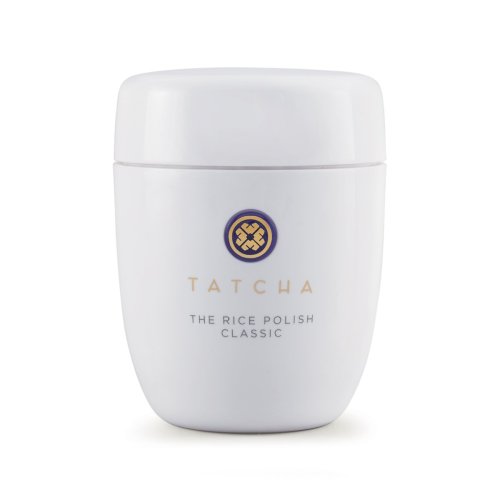
Tatcha The Rice Polish — $65.00
Mix water with this blend of Japanese rice bran and silk protein that to get a creamy yet exfoliating foam to smooth and polish your skin.

Reflekt Skincare Daily Exfoliating Face Wash — $34.00
Made with biodegradable beads crafted from jojoba esters, this face wash gently exfoliates while infusing the skin with a refreshing burst of hydration.
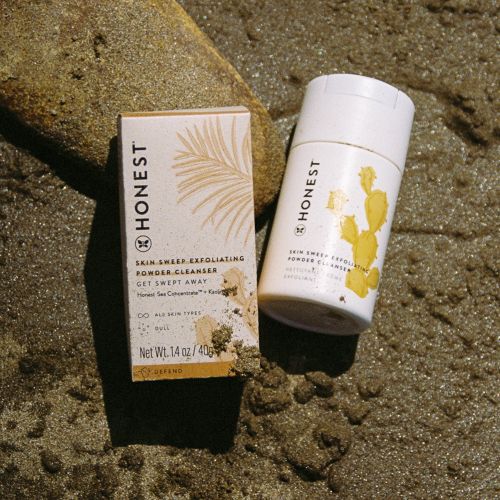
Honest Beauty Skin Sweep Exfoliating Powder Cleanser — $22.00
This powder-to-foam cleanser gently washes away debris and buildup from the skin using Honest’s very own Sea Concentrate along with kaolin clay.

African Botanics Buchu Botanical Enzyme Polish — $85.00
This gentle facial polish uses sun-dried Buchu plant, crushed Baobab fruit, micro-algae, and fine granules of ancient volcanic minerals to deeply exfoliate, cleanse, and refine skin.
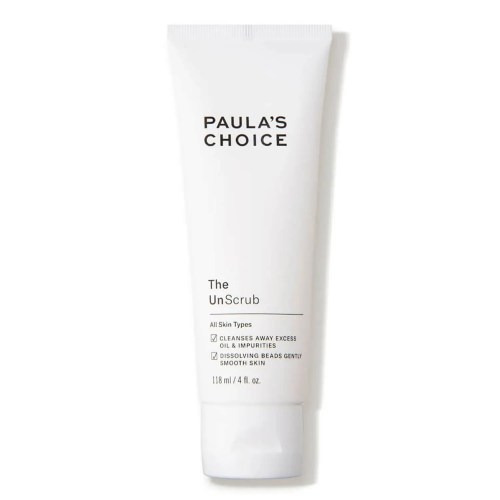
Paula’s Choice The UnScrub — $29.00
In this cleanser, Jojoba esters provide light and gentle scrubbing before dissolving while chamomile and green tea soothe the skin and minimize the appearance of redness.
Check out the video below for more intel on daily exfoliation.
Want even more beauty intel from our editors? Follow our Fineprint Instagram account) for must-know tips and tricks.
Sign up for the Well+Good SHOP Newsletter
Get exclusive deals on wellness, beauty, fitness, and food products that have been hand-picked by our editors.
Got it, you've been added to our email list.
